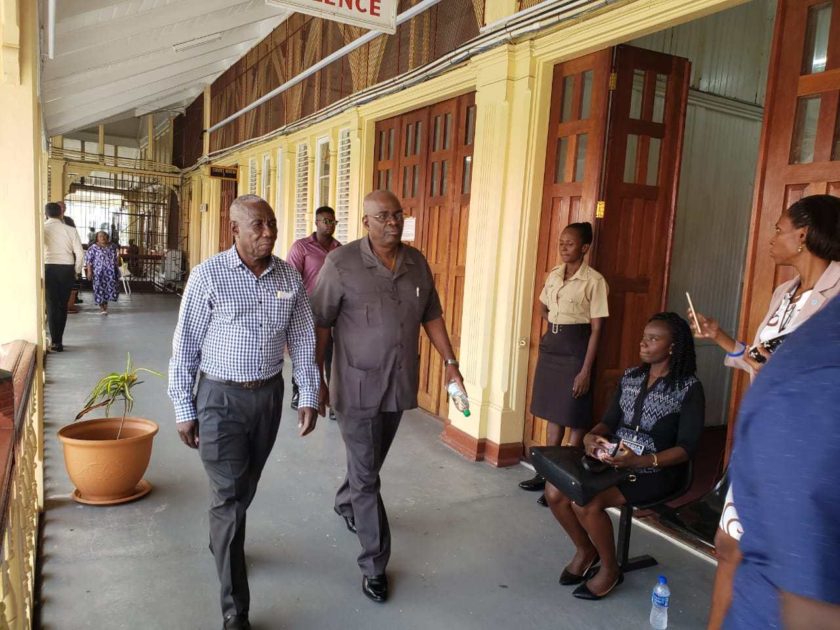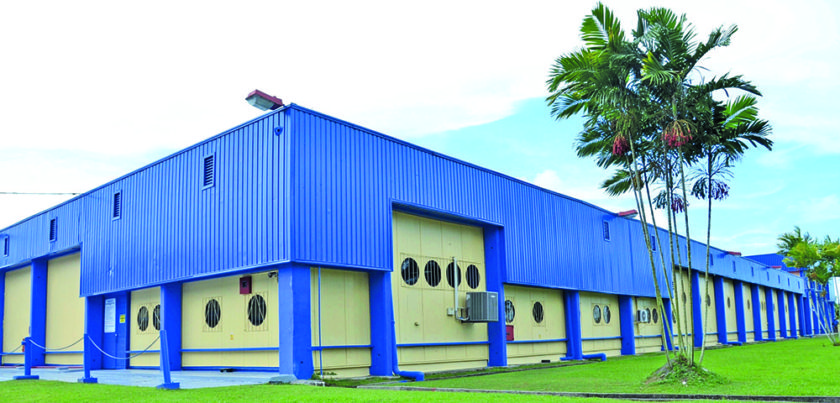
By Jarryl Bryan
Guyana has been red flagged by another United States (US) report and this time it is the Department of Homeland Security (DHS), which revealed in its 2018 Entry/Exit Overstay Report that some 3,220 Guyanese overstayed in the US on non-immigrant visas, after arriving for business or on vacation.
This, according to the report, occurred over the period of October 2017 to September 2018, during which time 66,416 Guyanese were supposed to depart from the US.
Guyana Times International understands that efforts are being made by the Immigration and Customs Enforcement Agency and other US Government agencies to hunt these persons down who have breached the conditions under which their US Visa was granted.
Over the years several Guyanese nationals who have been granted non-immigrant visas have resorted to overstay their time and some observers have noted that this is making it very difficult for other applicants who apply for a holiday visa.
According to this latest report, these figures represent a 4.85 per cent overstay rate and are an increase from the previous year, when 2,262 Guyanese also overstayed their time.
Of the latest numbers, the report states that 3,065 of these Guyanese are suspected to have been hiding in the US during this period. It also states that 155 are out of country overstays, or persons who eventually left the country having already overstayed their time.
In addition, the US has found that 45 of this amount were Guyanese students studying in the US and exchange visitors who overstayed the time they were given. There were 339 persons in this category who were supposed to depart the country during the one-year period, an overstay rate of 13.27 per cent.
In the previous year, the amount of Guyanese students overstaying was 28. The report shows that 322 students were expected to leave but 11 departed after their time had expired and there was no evidence that 17 of them departed at all.
Meanwhile, the report urges that identifying the offending aliens who overstay their time is important for national security, public safety, immigration enforcement and immigration benefits” purposes.
“Over the years, DHS significantly improved data collection processes in the entry environment. These improvements include the collection of data on all admissions to the United States by foreign nationals, the reduction of the number of documents that may be used for entry to the United States, the collection of biometric data on most foreign travelers to the United States, and the comparison of that data against criminal and terrorist watch lists.”
“Despite the different infrastructural, operational, and logistical challenges presented in the exit environment, DHS has been able to resolve many of the issues regarding the collection of departure information for foreign nationals.”
Last year there was a significant decline in the number of visitors’ visas issued by the US Embassy in Guyana.
According to a visa summary provided by the US Department of State’s Bureau of Consular Affairs, a total of 4923 visitors visa were approved by the US Embassy here during the 2018 Fiscal Year, which runs from October 2017 to September 2018.
This is a whopping 20,000 plus decline compared to the 25,338 visas granted in 2017. It was also significantly less than the 51,202 visas in 2016; 30,121 in 2015; and 17,284 visas in 2014.
The last time these figures were below 5000 was in 2010 when only 4242 non-immigrant visas were granted.
Counter-measures
It states that further efforts such as partnerships with other governments and members of the private sector such as airlines, airports and cruise lines are ongoing and will continue in order to improve data integrity.
“During the past four years, DHS made significant progress in terms of the ability to accurately report data on overstays—progress that was made possible by congressional realignment of Department resources in order to better centralize the overall mission in identifying overstays,” it also states.
“In FY 2018, new biometric exit tests and deployments in both the land and air environment enabled continued progress toward the fusion of biometric and biographic verification of travelers.
While these tests account for only a relatively small percentage of all th e departure records for FY 2018, this is a significant increase from FY 2017 and a critical step forward towards implementing a comprehensive biometric entry and exit system.”
Going forward, the report details that the DHS will continue to develop, test, and expand the entry and exit system during 2019. These improvements will pertain to both biometric and biographic traveler data.
“This testing will improve CBP’s ability to capture and report this data accurately.
DHS will continue to annually release this overstay data to the public and examine trends over time and looks forward to providing updates to congressional members and their staff on its ongoing progress,” the report states.
This report comes not long after the US President Donald Trump ordered his government to crack down on persons legally entering the US but overstaying their time. He signed a memorandum last month, in which he ordered the US State department and the DHS to submit their plans for cracking down on such illegal immigrants.
This memo, issued on April 22, had suggested, among other things, measures such as “suspending or limiting entry of nationals of those countries who hold B-1 or B-2 visas; targeted suspension of visa issuance for certain nationals; limits to duration of admission, to be implemented by the Department of Homeland Security; and additional documentary requirements.”



